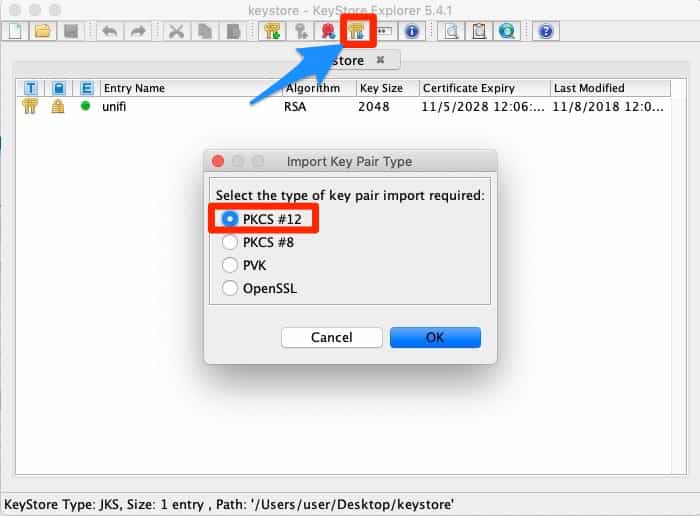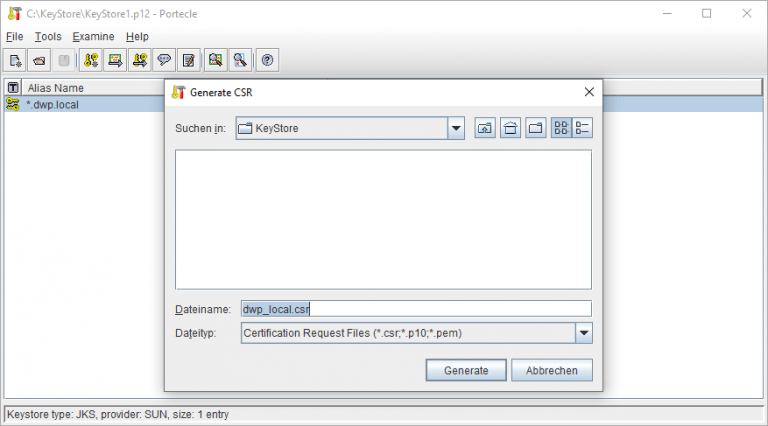

- #Keystore explorer export pfx how to#
- #Keystore explorer export pfx full#
- #Keystore explorer export pfx pro#
- #Keystore explorer export pfx password#

Open both files with a text editor like Notepad.Make a backup copy of the files called jetty-ssl.xml and jetty-ssl-terminalapi.xml.Save the keystore file to the EveryonePrint etc folder, by default in:.
#Keystore explorer export pfx password#
In this example, the password "mysecret" was chosen for both Keypair and Keystore password.
#Keystore explorer export pfx pro#
Find out what our Pro version of SoapUI can do to improve your testing.In this guide, we'll go through the process of importing PFX SSL certificate into EveryonePrint consisting of a PKCS key pair. Note: To learn about the other options on this page, see Securing MockService With SSL.
#Keystore explorer export pfx full#
Specify the full path to your keystore file and the keystore password: In the SoapUI Preferences dialog, switch to the SSL Settings tab. Use the Client Certificate for All RequestsĬlick Preferences on the main toolbar or select File > Preferences. On the Request Properties tab, select the added keystore from the SSL Keystore drop-down list: The new keystore will appear in the list. pfx export there could be 24 certificates inside. Select your keystore and specify its password. Certificate files for Java, Oracle, or Keytool SSL Keystore Installations. On the Keystores tab, click to add a keystore. Open the WS-Security Configuration tab and switch to the Keystores tab. To sign a single request with a certificate: Use the Client Certificate for One Request For example, you can import it to the mock’s trustrore. You can use this certificate to provide your public key to your web service. Keytool -export -alias soapui -file soapui.cer -keystore soapui.keystore To export a certificate with your public key, execute the following command: You must enter a password for the new keystore and provide the utility with the required information (such as your name, the name of your organization and so on). Keytool -genkey -alias soapui -keyalg RSA -keystore soapui.keystore Execute the following command to create a keystore: Open the command prompt and navigate to the bin folder in the JDK folder (for example C:\java\jdk1.8.0_112\bin). To do this, you can use the keytool utility that is included in the JDK installation. To sign a request, you need to generate a private/public key pair.
#Keystore explorer export pfx how to#
To learn how to configure a mock service to use SSL, see Securing MockService With SSL.

In SoapUI, you can specify a certificate for outgoing requests. The server in its turn may also request a certificate from the client. The client requests a certificate from the server to verify the server’s identity. The HTTPS protocol provides a protected connection between a client and the server by using a security layer (TLS/SSL).


 0 kommentar(er)
0 kommentar(er)
